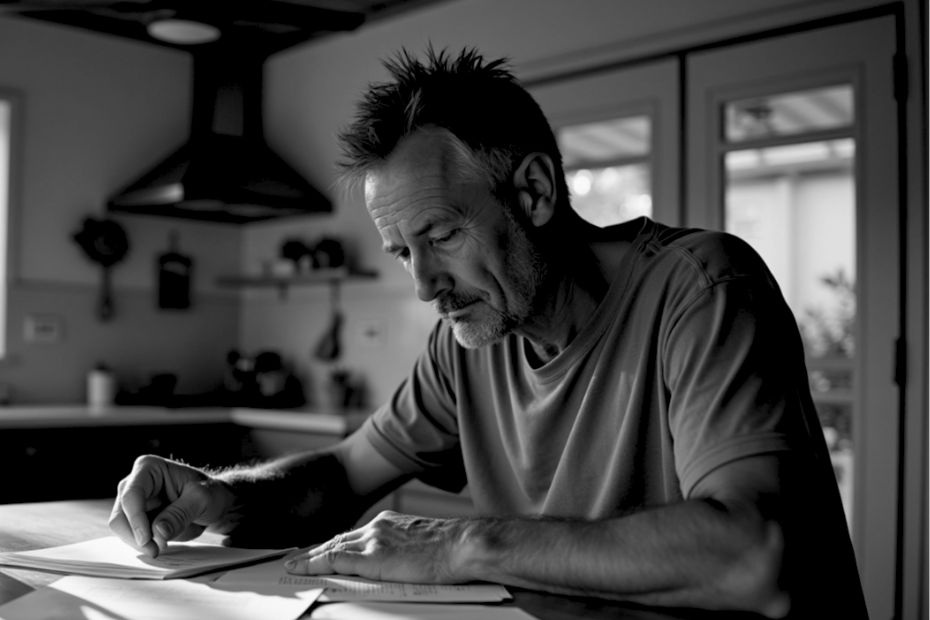Domestic Violence: One in Six. One in Sixteen.
Did you know 1 in 6 women and 1 in 16 men in Australia have experienced domestic violence? These alarming statistics paint a stark picture of a reality that cuts across socioeconomic backgrounds, geographic locations, and demographics. Domestic violence isn’t just about physical abuse; it’s a complex issue that can encompass emotional, financial, and psychological control. This article serves as your guide to understanding domestic violence in Australia, empowering you to recognize the signs, access vital support services, and most importantly, know you’re not alone.
We’ll explore the prevalence of domestic violence in Australia, the different forms it can take, and the warning signs to watch out for. We’ll also discuss how to respond effectively if you or someone you know is experiencing domestic violence, highlighting the crucial role domestic violence lawyers can play in safeguarding victims’ rights. Finally, we’ll provide a range of resources and support services available to help you navigate this challenging situation.
Domestic Violence in Australia: A Reality for Many
Domestic violence is a disturbing reality in Australia, impacting countless individuals and families from all walks of life. The statistics are stark: 1 in 6 women and 1 in 16 men have experienced physical or sexual violence from a current or former partner. This problem cuts across socioeconomic backgrounds, geographic locations, and cultural norms.
But domestic violence goes beyond physical harm. It’s a complex issue that can manifest in various ways, often encompassing a web of control tactics designed to isolate and intimidate victims. This can include:
- Emotional Abuse: Constant criticism, humiliation, verbal threats, and intimidation are all forms of emotional abuse that chip away at a victim’s self-esteem and sense of security.
- Financial Abuse: Controlling finances, denying access to money, or sabotaging a victim’s financial independence are manipulative tactics used to exert power and control.
- Psychological Control: Isolation from friends and family, monitoring behavior, and constant surveillance can create a sense of fear and dependence on the abuser.
Understanding these different forms of domestic violence is crucial. It’s not just about physical injuries; it’s about a systematic pattern of control that can have devastating consequences for victims.
Identifying the Risk Factors: Are You or Someone You Know At Risk?
Domestic violence can occur in any relationship, but certain factors can unfortunately increase the likelihood of it happening. Here are some warning signs to be aware of:
- A Past History of Violence: If there has been violence or aggression in the past, either within the current relationship or the family background of either partner, it’s a significant risk factor. This could include physical violence, threats, or emotional abuse.
- Substance Abuse Issues: Substance abuse, such as alcohol or drug misuse, can lower inhibitions and contribute to violent behavior. If one partner struggles with addiction, it’s important to recognize the potential risk it poses.
- Financial Stress and Economic Hardship: Financial difficulties and economic hardship can create significant tension within a relationship. This stress can become a trigger for abusive behavior in some individuals.
- Mental Health Concerns: Mental health issues, such as depression, anxiety, or anger management problems, can contribute to a volatile environment and increase the risk of violence.
- Controlling Behavior and Possessiveness: A partner who exhibits excessive jealousy, tries to control your behavior or who isolates you from friends and family are displaying red flags. This controlling behavior can easily escalate into abusive situations.
- Cultural Attitudes Condoning Violence: Unfortunately, some cultural norms may downplay or even condone violence within relationships. It’s important to challenge these attitudes and recognize that domestic violence is never acceptable.
If you recognize any of these warning signs in your own relationship, or if you’re concerned about someone you know, it’s crucial to seek help. Remember, you are not alone, and there are resources available to support you.
Recognizing the Signs: When Abuse Becomes a Pattern
Domestic violence doesn’t always leave physical scars. While physical injuries, bruises, burns, or broken bones can be a clear sign of abuse, it’s important to recognize the emotional and behavioral signs that often paint a more complete picture. Here’s what to watch out for:
- Changes in Mood and Behavior: A once outgoing and vibrant partner who becomes withdrawn, anxious, or fearful could be a victim of emotional abuse. Sudden mood swings, tearfulness, or difficulty sleeping can also be indicators.
- Isolation from Friends and Family: Does your friend or partner seem to be withdrawing from social circles? An abuser may try to isolate their victim by controlling who they see and talk to, creating a sense of dependence and loneliness.
- Financial Control and Manipulation: Does your partner control the finances, make you account for every cent you spend, or deny you access to money? Financial abuse is a tactic used to exert power and control, making it difficult for a victim to leave the relationship.
- Threats, Intimidation, and Verbal Abuse: Threats of violence, put-downs, constant criticism, and name-calling are all forms of verbal abuse that can erode a victim’s self-esteem and create a climate of fear.
- Psychological Manipulation and Emotional Control: An abuser may use guilt trips, gaslighting (denying or twisting reality), or threats of suicide to manipulate their partner’s emotions and maintain control.
If you notice a combination of these signs in yourself, your partner, or someone you know, it’s important to take action. Remember, domestic violence is a serious issue, but there is help available.
Taking Action: How to Respond to Domestic Violence
If you or someone you know is experiencing domestic violence, it’s crucial to take action. Here’s how you can be a source of support:
- Listen and Believe: First and foremost, listen attentively and believe the person experiencing domestic violence. Avoid judgment and validate their feelings. Let them know they’re not alone and that you care about their safety.
- Offering Support: Create a safe space for them to talk openly and express their emotions. Offer emotional support and let them know you’re there for them. You can also help them find resources and services available to assist them, such as helplines or support groups.
- Seeking Professional Help: Domestic violence lawyers play a vital role in protecting victims’ rights. They can provide legal guidance, advocate for their safety in court, and help them secure protection orders against the abuser. This legal support can empower victims and ensure their safety.
Remember, you don’t have to navigate this alone. By offering support, listening without judgment, and encouraging professional help, you can make a real difference in someone’s life.
Domestic Violence Lawyers
Domestic violence can leave victims feeling isolated and powerless. But you don’t have to face this alone. Domestic violence lawyers can be your strong advocates, working tirelessly to ensure your safety and security. Here’s how they can empower you:
- Expert Legal Guidance: Domestic violence lawyers possess a deep understanding of the legal system and the intricacies of domestic violence cases. They can provide clear and concise legal advice tailored to your specific situation.
- Navigating Protection Orders: Securing a protection order can be a crucial step in safeguarding yourself from further abuse. Domestic violence lawyers can guide you through the legal process, ensuring all necessary paperwork is completed and advocating for your protection in court.
- Fighting for Your Rights: Domestic violence lawyers are fierce defenders of your rights. They will fight for a just outcome, ensuring your safety and well-being are prioritized throughout the legal process.
By working with a domestic violence lawyer, you gain a powerful ally who can empower you to take control of your situation and rebuild your life free from fear.
Conclusion: You Are Not Alone: Your Path to Safety and Healing
Domestic violence is a serious issue, but it’s important to remember: you are not alone. There are people and resources available to help you on the path to safety and healing. If you recognize the warning signs in yourself or someone you know, taking action is crucial.
Empowerment Through Support:
- 1800RESPECT: This national support service offers 24/7 confidential counseling and information for victims of sexual assault, domestic and family violence. Call 1800 737 732 anytime to speak with a trained professional.
- Lifeline: In a crisis situation, Lifeline provides 24/7 support for anyone experiencing emotional distress. Call 13 11 14 to speak with someone who can listen and offer support.
- Women’s Legal Services Australia: WLSA provides legal advice, information, and resources specifically for women experiencing domestic violence. Visit their website at https://www.wlsa.org.au/ for more information.
Mediations Australia: While Not Applicable in All Cases
While our services at Mediations Australia may not be directly applicable in every domestic violence situation, we understand the complexities of separation and divorce arising from such circumstances. If you’re considering separation or divorce, and require a safe and respectful environment to navigate these legal complexities, family law mediation can be a helpful option.
What We Offer:
Mediations Australia provides experienced family law mediators who can facilitate open communication between you and your former partner in a neutral setting. This allows you to collaboratively reach agreements on important matters like property division, financial settlements, and (if applicable) child custody arrangements, minimizing conflict and promoting a fair outcome for all parties involved.



